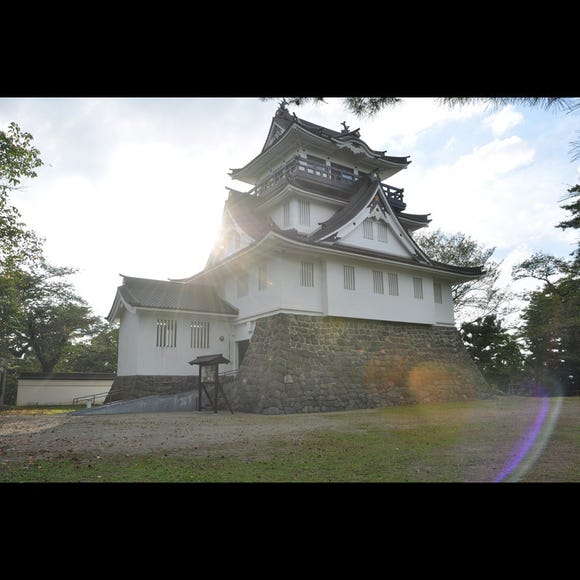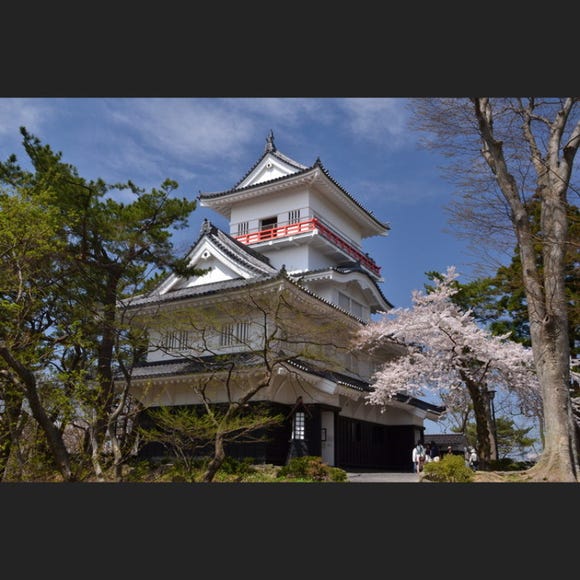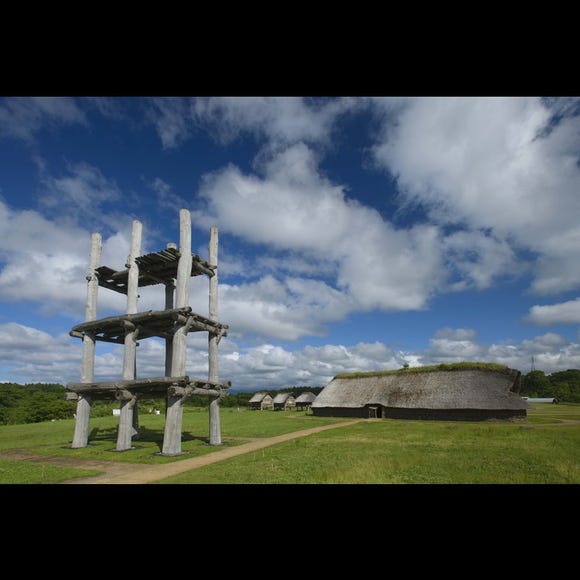
Niigata Prefecture, located in the central Chubu region of Japan, faces the Sea of Japan and is surrounded by towering mountains and gorgeous wilderness.
Niigata is most famous for its abundant seafood and flavorful rice, which naturally leads to delicious sake. It is easily accessible in roughly two hours from Tokyo Station via bullet train or on a one-hour flight from Osaka.
This article presents the complete guide to Niigata sightseeing, including transport information, the best local cuisine, and fun activities to try.
(Main image: PIXTA)
- Table of Contents
-
- 1. Quick facts about Niigata
- 2. When is the best time to visit Niigata?
- 3. Getting to and around Niigata
- 4. Accommodations: Where to stay in Niigata
- 5. Must-try foods in Niigata
- 6. Cultural things to see in Niigata
- 7. Recommended activities and things to do in Niigata
- 8. Shopping in Niigata
- 9. Sightseeing spots around Niigata Prefecture
1. Quick facts about Niigata

Niigata is located on the northwestern coast of the Japanese mainland. It is the 5th largest in size of Japan’s 47 prefectures and is characterized by a diverse landscape of expansive coastline, rugged mountains, and sweeping plains. The local food and activities change depending on the area, making it well worth multiple visits.

One of the most common reasons to visit Niigata is the wealth of produce and cuisine. Niigata is Japan’s leading producer of rice, the pinnacle of which is the much-coveted strain of “koshihikari,” and is also a prominent hub for sake and seafood. In fact, Niigata boasts the most sake breweries in Japan, making it a paradise for sake connoisseurs.
Also in Niigata are the two islands of Sado and Awashima, which are likewise celebrated for their consistent supply of fresh seafood. Often served as both sushi and “kaisendon” seafood bowls, many venture to these remote islands just for their cuisine cultures alone.

In addition, the mountainous inland regions are renowned for exceptional snowfall. Taking advantage of this are numerous ski resorts, many of which have found a cult following amongst international skiers and snowboarders. This area also hosts the Echigo-Tsumari Art Triennial festival every three years. Going strong for over two decades, the spacious, quaint mountain villages act as the stage for numerous displays of art, attracting fans from across the globe.
2. When is the best time to visit Niigata?

The Climate of Niigata
Despite the nickname “snow country,” summertime in Niigata can become extremely hot, showcasing the full extent of each of the four seasons. We recommend wearing a light jacket and sweater in spring, a t-shirt in summer, a coat in autumn, and cold weather gear including a down jacket, gloves, and scarf during winter.
Seasonal Highlights in Niigata

With such distinctive seasonal weather, the charms of Niigata change depending on the time of year. During spring, we recommend visiting Takada Castle Park to witness one of Japan’s top three night-time cherry blossom views. In summer, the coastline is dotted with gorgeous beaches ideal for swimming while the Nagaoka Festival Grand Fireworks Show, counted amongst Japan’s top three fireworks displays, is held in early August. Even if you miss out on this grand festival, each region holds its own impressive fireworks show, making it difficult to miss out!
Meanwhile, the dazzling foliage of autumn can be enjoyed from a boat at Lake Oku-tadami or on a cable car ride with the Naeba Dragondola. In winter, there are loads of ski resorts to check out, the most famous being GALA Yuzawa Snow Resort, Naeba Ski Resort, or the Myoko Kogen area. There are also places to enjoy a wintertime fireworks show on the snow, so keep your eyes peeled for information!
3. Getting to and around Niigata

Access From Tokyo to Niigata
Niigata can be accessed from Tokyo via plane, bullet train, highway bus, or rental car. The most convenient method is the bullet train, which runs from JR Tokyo Station to JR Niigata Station in just 1 hr 37 mins on the express and 2 hrs on the regular service. A one-way ticket will start from around 10,000 yen. We also recommend purchasing the JR EAST PASS (Nagano, Niigata area), which allows unlimited rides for five consecutive days on trains within certain areas (only available for foreign passport holders).
If you’re planning a round trip of Japan, it may be better to reach Niigata via airplane. There are several low-cost carriers departing Narita International Airport for Niigata Airport, while tickets can be nabbed for as little as 3,000 yen during a sale from Kansai International Airport near Osaka. However, be aware that these services are extremely popular during the holiday season, so it’s best to book in advance.

Getting Around in Niigata
Once you arrive in Niigata Prefecture, you’ll be able to get around by rail, bus, or rental car. The best way to tour Niigata City is via the Niigata City Loop Bus. If you wish to visit Sado Island from Niigata City, take the bus from Niigata Station to Niigata Port and board either the “Car Ferry” (2 hrs 30 mins) or “Jetfoil” (1 hr 10 mins).
Many of Niigata’s regional sightseeing spots, such as the rustic castle town of Murakami, the hot spring and shrine village of Yahiko, and the skiing mecca of Echigo-Yuzawa can be easily accessed via express or bullet train services.
4. Accommodations: Where to stay in Niigata

When touring Niigata or visiting Sado Island, we recommend first spending the night around Niigata Station. Buses depart from Niigata Station regularly, allowing you to spend the night relishing the array of restaurants before boarding the bus the next day.
There is a plethora of hotels surrounding Niigata Station suiting all price levels. A business-style hotel on a weekday will cost just 4,000 - 5,000 yen a night. For even cheaper options, there are guesthouses and hostels just 10-minutes away by bus.
If you’d prefer to stay in a traditional hot spring resort, we recommend Tsukioka Onsen, a 45-minute drive away from the station renowned for its beautifying waters, or Iwamuro Onsen, which is famous for fireflies during midsummer.
-

-
Address
693, Iwamuroonsen, Nishikan-ku, Niigata-shi, Niigata, 953-0104
View Map -
Nearest Station
Iwamuro Station (Echigo Line)
11 minutes by bus
- Phone Number 0256-82-4151
-
Address
693, Iwamuroonsen, Nishikan-ku, Niigata-shi, Niigata, 953-0104
5. Must-try foods in Niigata

Your first bite in Niigata should undoubtedly be fresh sushi or a kaisendon seafood bowl! The cream of the crop is the “Kiwami” brand, which is specially promoted by the prefecture only to be served at selected restaurants.
Alongside local fish, it features sea urchin, fatty tuna belly, and salmon roe, allowing the purest encounter with the bounties of Niigata. There are restaurants across the entirety of Niigata serving Kiwami, including at Murakami, Niigata City, Sado City, and Itoigawa.
Of course, high-quality rice is the base upon which good sushi is made! Niigata is famous throughout Japan for its rice production, particularly the fluffy, sweet koshihikari.
Certain brands like Uonuma Koshihikari and Sado Koshihikari are particularly well respected, with fans paying a premium to have it shipped all over the country.
Combining it with fresh seafood makes for an out-of-this-world culinary experience! Plus, you can wash it down with a bottle of one of Niigata's hundreds of local sake varieties, many of which are unavailable anywhere else. While 3rd place in production volume compared to Hyogo and Kyoto Prefectures, Niigata boasts the highest number of individual breweries in Japan, making it a must-visit for anyone who enjoys their drink.
For a comprehensive English sake brewery tour, we recommend Imayo Tsukasa, a 15-minute walk from Niigata Station. Founded in 1767, this long-established brewery has designed a fascinating and fun tour/tasting course complemented by a swanky shop selling all sorts of sake-based goodies.
6. Cultural things to see in Niigata

Furumachi, a 10-minute bus ride from Niigata Station, stands amongst Kyoto’s Gion and Tokyo’s Shinbashi as one of Japan’s culturally significant geisha districts.
In Niigata, geisha are called “geigi,” and they prospered alongside the city as it grew from the Edo period.
At its peak, there were said to be over 300 geigi in Furumachi, making it a hub of sophistication and culture. Nowadays, remnants remain at high-class restaurants like Ikinariya and Nabechaya, which host geigi dances and more.
7. Recommended activities and things to do in Niigata

Niigata is all about snow sports. The peak skiing season is from December to early May for the snowiest regions.
One of the most accessible ski resort towns is Echigo-Yuzawa, which can be reached from Tokyo Station via bullet train in just 1 hr 10 mins.
One particularly notable resort here is GALA Yuzawa, which is directly connected to the station and has plenty of beginner-friendly courses. There is also a skiing and snowboarding school with classes held in English with Chinese and Thai translation services available.
-

-
Address
1039-2 Kayabira, Yuzawa, Yuzawa-Cho, Minami-Uonuma-Gun, Niigata-Ken 949-6101, 949-6101
View Map -
Nearest Station
Gala Yuzawa Station (Joetsu Shinkansen Bound For Gala Yuzawa)
0 minute on foot
- Phone Number 025-785-6543
-
Address
1039-2 Kayabira, Yuzawa, Yuzawa-Cho, Minami-Uonuma-Gun, Niigata-Ken 949-6101, 949-6101
In addition, Akakura Kanko Resort in Myoko has also found a growing fanbase with international skiers in recent years.
This iconic facility was the first in Japan to be recognized as an international ski slope and boasts heavy snowfall of over 13 meters every year. Starting at 1,500 meters, you’ll be able to cruise down a whopping 4km run and challenge yourself on a jumping course. There is also an area for kids to ski and get accustomed to the snow, making it a great place for families too.
8. Shopping in Niigata

Many are unaware of the masterful metalworking of Niigata’s Tsubamesanjo. Located around the center of the preference, Tsubamesanjo is made up of the dual cities of Tsubame and Sanjo and has long been a hub of blade forging, metalworking, and utensil production.
At Tsubamesanjo Station, a stop on the bullet train, is WING, which exhibits an assortment of local metal crafts to browse and purchase. From kitchenware like hot pots and bowls to cutlery like spoons and forks, these extraordinarily high-quality, hand-made items make the ideal souvenirs!
Also, make sure to stop by Ponshukan, which houses a jaw-dropping assortment of regional sake from all of the prefecture’s breweries located in both Niigata, Nagaoka, and Echigo-Yuzawa Stations. Here you can relish five cups of sake for 500 yen using the famous sake vending machine system.
After finding one that takes your fancy, purchase the bottle to bring home and reminisce over your travels. In addition to sake, there is also a bulky selection of locally made rice crackers, condiments, finger food, and even sweets made using sake! Ponshukan is the ideal final stop for a last-minute helping of Niigata produce before heading back to Tokyo.
9. Sightseeing spots around Niigata Prefecture
According to the Niigata Prefectural Tourist Association, sightseeing in Niigata is split into the following 7 areas:
1. Northern Niigata - Murakami, Shibata
2. The Capital - Niigata City and Aga
3. The Shrine and Metalworking Heartland - Yahiko and Tsubamesanjo
4. The Famous Fireworks - Nagaoka and Kashiwazaki
5. The Skiing Center - Yuzawa, Uonuma
6. The Night-Time Cherry Blossoms and Akakura Ski Resort - Myoko, Joetsu
7. The Sado Gold Mine and Tarai Bune Boats - Sado Island

The Murakami and Shibata areas once prospered as castle towns and remain filled with fascinating castle relics, samurai mansions, and other historical tidbits.
Murakami also boasts a unique history as a salmon-fishing town, which has evolved into over 100 different salmon dishes eaten throughout the area, many of which are served at restaurants within the town. Murakami can be accessed from Niigata Station in approximately 50 mins via express train and 1 hr 20 mins on a regular train. The ride cuts directly through the heartland of rural Niigata, showcasing endless rice fields and charming, rustic scenery.
Plus, if you use the highway bus, you can also get to Fukushima Prefecture’s fascinating former castle town of Aizuwakamatsu in under 2 hours. This is a great place to visit next after exploring the wonders of Niigata.
Indeed, Niigata is a great place to explore the surrounding prefectures and regions too. Packed to the brim with delicious food, lush nature, and tons of outdoor fun, Niigata Prefecture is definitely worth at least a few days on your Japan itinerary!
Text by: Madoka Hasegawa
*The information presented in this article is accurate as of December 2021. Please confirm the latest details on official websites.
- Area
- Category
*Prices and options mentioned are subject to change.
*Unless stated otherwise, all prices include tax.
Popular Tours & Activitiess
Recommended places for you
-

Matsushima Bay
Landscapes
Sendai And Matsushima
-

Yokote Park
Parks
Surrounding Areas Of Akita
-

Senshu Park
Parks
Surrounding Areas Of Akita
-

Sannai-Maruyama Site
Village Ruins
Aomori, Hirosaki And Hachinohe
-

Ishiguro Samurai House
Historical Places
Surrounding Areas Of Akita
-

Aomori Nebuta Festival
Japanese Festivals (Matsuri)
Aomori, Hirosaki And Hachinohe
-
Ad

Why Fukushima is the Next Big Food Destination in Japan The Foodie Paradise Only 90 Minutes from Tokyo
-

Smart Ways to Avoid Crowds and Enjoy a Safe, Comfortable Trip to Myoko, Niigata Prefecture.
-

Aomori's Quiet Side in Autumn: 5 Scenic Spots in Hachinohe According to a Local
by: Marco Blasco
-
Ad

Advice from the Experts at Hitohira: Here's How to Choose the Best Japanese Knife
-

What to Buy in Aomori? 11 Aomori Souvenirs Locals Actually Recommend
by: ShiroKu inc.
-

Shopping in Niigata: 9 Must-Buy Souvenirs & Local Sake to Take Home
by: ShiroKu inc.
-

Complete Guide to Buying Japanese Medicine in Japan: Phrases and Vocabulary You Need to Know
-

Sendai Umino-Mori Aquarium: Inside Northeast Japan's Largest Aqua Attraction
-

20 Best Things to Do in Fukushima Prefecture (Sightseeing Attractions, Local Foods & Activities)
-

Iwate Prefecture Guide: Destinations, Activities, Travel Advice, Shopping & More
by: Hiroko Ariga
-

We Asked: What Do Foreign Tourists Love About Japan's Tohoku Region?
-

Odate City, Akita: Where Northern Japanese Traditions Come to Life



























